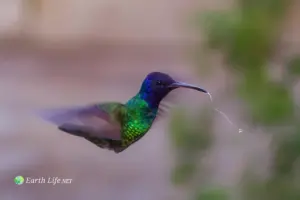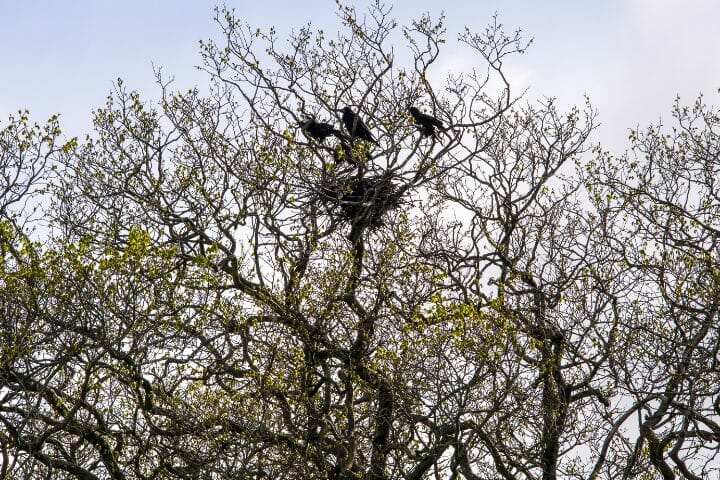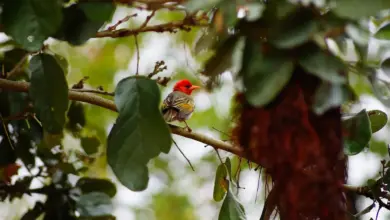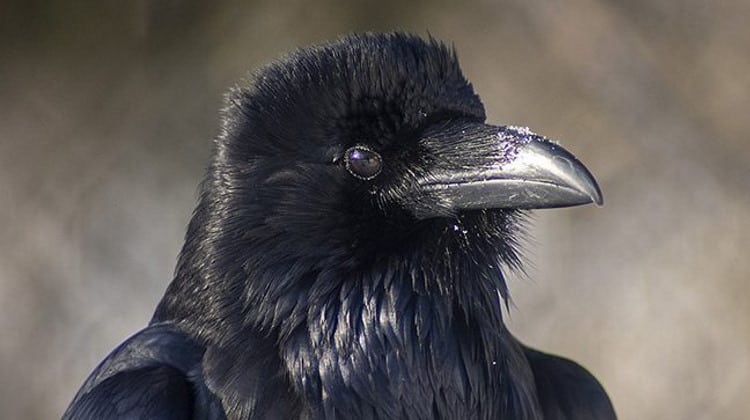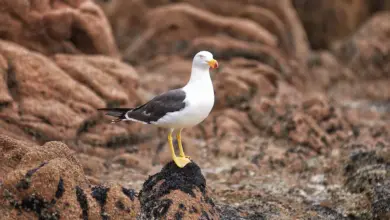Venezuelan Sylph Hummingbird (Aglaiocercus berlepschi)
Venezuelan Sylph Hummingbird (Aglaiocercus berlepschi)
The Venezuelan Sylphs (Aglaiocercus berlepschi) are South American hummingbirds with a very restricted range in Venezuela. They are considered nationally Endangered in Venezuela due to habitat loss and degradation. Population estimates range from 2,500 – 9,999 surviving birds.
Some consider them a subspecies of the Long-tailed Sylph (Aglaiocercus kingi).
Venezuelan Sylph Distribution / Habitat
Venezuelan Sylphs are confined to a small area in the coastal mountain ranges of northeast Venezuela. Specifically, they are found in the Turimiquire Massif (both in the Serranía de Turimiquire to the west of the San Antonio valley and the Cordillera de Caripe to the east) on the borders of the states of Sucre, Anzoategui, and Monagas, and the Cerro Negro – the highest mountain of the Monagas State. Unconfirmed records of this species also exist on the Peninsula de Paria in northern Venezuela.
These birds were formerly common to fairly common in at least parts of their range. However, their numbers have been declining mostly due to habitat destruction, and they are now listed as an endangered species by BirdLife International.
These hummingbirds occur naturally on humid to wet subtropical mountainous forest slopes and scrubland close to the coast – from 4,760 – 5,900 feet (~1,450 – 1,800 meters) above sea level.
Venezuelan Sylph Description
Venezuelan Sylph Size
Venezuelan Sylphs Males average 8.7 inches (~ 22 cm) in length, including their elongated outer tail feathers which measure 5.6 – 5.9 inches (14 – 15 cm). Their average weight is 0.2 oz or 5.5 g.
Females measure between 3.7 – 4.3 inches (9.5 – 11 cm) and weigh about 0.2 oz (4.5 g).
Adult Males
The male is easily identified by his blue throat patch (gorget), dark green, glossy crown, and – above all – by his extremely long outer tail feathers that are deep violet at the base and then fade to blue at the ends, and the two shorter, blue-green central tail feathers. The rest of the plumage is mostly iridescent green, darker on the crown. The plumage below is bronzy green, except for the colorful throat patch. The bill is short and black.
Adult Females
The female is green on the back, has a blue crown and throat, and a white throat, chest, and belly. Her tail is shorter than that of the male but is still fairly long, and it is green-colored and slightly forked.
Similar Species To The Venezuelan Sylph
They resemble the related Long-tailed Sylph (Aglaiocercus kingi); however, their ranges do not overlap. The Long-tailed Sylph males of the subspecies kingi and margarethae have some blue on the crown and green tipped tail feathers. Females have a cinnamon / rufous chest and abdomen. Subspecies caudatus has a blue tail and males lack the blue throat patches.
Venezuelan Sylph Diet / Feeding
The Venezuelan Sylphs primarily feed on nectar taken from a variety of brightly colored, scented small flowers of trees, herbs, shrubs, and epiphytes. They favor flowers with the highest sugar content (often red-colored and tubular-shaped) and seek out, and aggressively protect, those areas containing flowers with high-energy nectar. They use their long, extendible, straw-like tongues to retrieve the nectar while hovering with their tails cocked upward as they are licking at the nectar up to 13 times per second. Sometimes they may be seen hanging on the flower while feeding.
Many native and cultivated plants on whose flowers these birds feed heavily rely on them for pollination. The mostly tubular-shaped flowers exclude most bees and butterflies from feeding on them and, subsequently, from pollinating the plants.
They may also visit local hummingbird feeders for some sugar water, or drink out of bird baths or water fountains where they will either hover and sip water as it runs over the edge; or they will perch on the edge and drink – like all the other birds; however, they only remain still for a short moment.
They also take some small spiders and insects – important sources of protein particularly needed during the breeding season to ensure the proper development of their young. Insects are often caught in flight (hawking); snatched off leaves or branches, or taken from spider webs. A nesting female can capture up to 2,000 insects a day.
Males establish feeding territories, where they aggressively chase away other males as well as large insects – such as bumblebees and hawk moths – that want to feed in their territory. They use aerial flights and intimidating displays to defend their territories.
Metabolism and Survival and Flight Adaptions – Amazing Facts
Venezuelan Sylph Nesting / Breeding
The male’s tail feathers are so long that they make flying cumbersome and overcoming this challenge requires a certain level of fitness and strength for the male to survive – which, in turn, attracts females to the male with the longest tail as they associate a long tail with strength.
Hummingbirds are solitary in all aspects of life other than breeding, and the male’s only involvement in the reproductive process is the actual mating with the female. They neither live nor migrate in flocks, and there is no pair bond for this species. Males court females by flying in a U-shaped pattern in front of them. He will separate from the female immediately after copulation. One male may mate with several females. In all likelihood, the female will also mate with several males. The males do not participate in choosing the nest location, building the nest, or raising the chicks.
The nest is a suspended ball of moss that is fastened to leafy twigs with a side entrance. The average clutch consists of one white egg, which she incubates alone, while the male defends his territory and the flowers he feeds on. The young are born blind, immobile, and without any down.
The female alone protects and feeds the chicks with regurgitated food (mostly partially digested insects since nectar is an insufficient source of protein for the growing chicks). The female pushes the food down the chicks’ throats with her long bill directly into their stomachs.
As is the case with other hummingbird species, the chicks are brooded only the first week or two and are left alone even on cooler nights after about 12 days – probably due to the small nest size. The chicks leave the nest when they are about 20 days old.
Venezuelan Sylph Alternate (Global) Names
- Chinese: ?
- Czech: sylfa venezuelská
- Danish: Venezuelasylfide
- Dutch: Berlepsch’ Langstaartnimf
- French: Sylphe du Venezuela
- German: Berlepschsylphe
- Italian: Silfide del Venezuela
- Japanese: aofutaohachidor
- Norwegian: Bredhalesylfe
- Polish: komecik wenezuelski
- Slovak: chvostácik venezuelský, vrchárik venezuelský
- Spanish: Silfo de Berlepsch
- Swedish: Venezuelasylf

